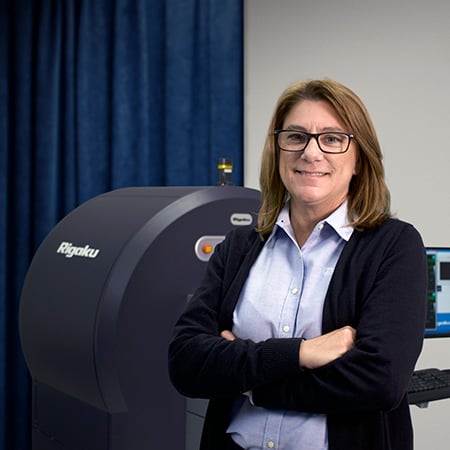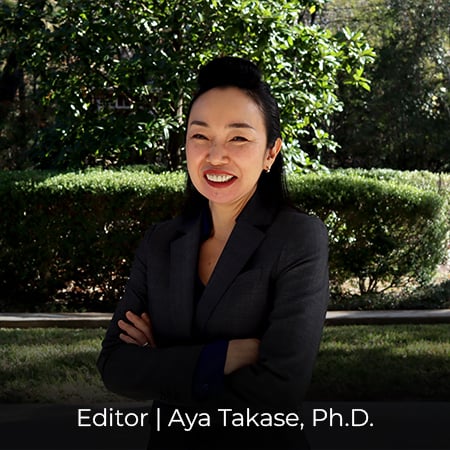X-ray Computed Tomography: A Brief Introduction
1. What is X-ray CT?
X‑ray computed tomography (CT) is an X‑ray imaging technique that can non-destructively scan the density distribution of an object in 3D and reveal internal structures. It was originally commercialized in the early '70s to scan human brains and has been widely used for medical purposes for a good reason: It is non-destructive. You might be familiar with the term, CAT scan, which stands for computed axial tomography.
The resolution of the medical CT scanners is in the submillimeter to millimeter order, while micro-CT and nano-CT scanners can achieve higher resolution and are widely used for materials and life science research. The principle is the same. You can scan an object and get "slices" that reveal the internal structures without physically slicing the object. The figure below shows actual CT scans of bread (center) and sesame seed (right).

The ability to scan objects in 3D without slicing or sectioning is the biggest advantage of X‑ray CT over other microscopy techniques, such as SEM (scanning electron microscopy), TEM (transmission electron microscopy), and optical microscopy. But how is this possible?

2. How does X-ray CT work?
X‑ray CT can non-destructively image objects because X‑rays can penetrate through them. Let's start with two-dimensional X-ray imaging. X-rays are absorbed by the object and transmitted X‑rays generate an absorption contrast image as a 2D projection. This is how it works with regular X‑rays you might get at a doctor's office to check out your broken arm.

You can get this 2D projection representing the density distribution in the object as a grayscale image because different things absorb X‑rays differently. For given X‑ray energy, the denser and the thicker material is, the more X‑rays are absorbed. In other words, by measuring the X‑ray intensity distribution, you can figure out how dense or thick the material was for each location. But, as you might realize by looking at the figure below, you can't tell the difference between the material being dense and thick just by looking at a 2D projection. To differentiate these two effects, you need to obtain a three-dimensional density distribution image, a.k.a. an X‑ray CT image.

Here is the basic idea. If you look at an object from one direction, you might not be able to know its three-dimensional shape. But if you look at it from many different directions, you can understand its three-dimensional shape. X‑ray CT works in a similar way. You can scan the X‑ray source and detector around the object and obtain multiple 2D projections. Then you can put these projections into a reconstruction program to "reconstruct" the 3D image. Once you have a 3D CT image, you can look at cross-sections of the object from any angle or at any location. You can also create a 3D rendered image of the object. By segmenting the CT images, you can analyze volume fraction, pore/particle size distribution, thickness distribution, etc.

Medical CT scanners keep the object (patient) still on a bed and scan the X‑ray source and detector around it. X‑ray CT scanners used for materials and life science research or for industrial inspections generally keep the X‑ray source and detector fixed and rotate the object to collect multiple (often hundreds to thousands) 2D projections. An X‑ray CT scanner consists of an X‑ray source, sample stage, and 2D detector. Different energy ranges of X‑ray sources are selected depending on the density and size of the sample. Different geometries and detectors are selected depending on the required resolution.

3. Does X-ray CT help my research?
If you are looking for a way to image the internal structure of your research subject non-destructively, X‑ray CT might be the way to do it. If you use electron or optical microscopes and need an alternative or complementary technique that does not require sample sectioning, drying, staying, coating, etc., X‑ray CT can be that technique. Here are the pros and cons of X‑ray CT:
Pros
- Non-destructive
- Three-dimensional
- Virtually no special sample preparation
Cons
- Limited sample size and density (A car engine is about the limit of laboratory X‑ray CT.)
- Limited resolution (Submicron to a few microns is the general limit of laboratory X‑ray CT.)
- No elemental information (For laboratory X‑ray CT.)
4. How do I choose the right CT scanner?
Depending on the material, sample size, and resolution required to see the features you want to see, different types of X‑ray CT scanners are required. You can roughly categorize them by the required X‑ray energy and resolution. Small and light samples such as foams and other organic materials require a low-energy (less than 20 keV) X‑ray source and high-resolution geometry involving CCD, sCMOS, and magnification lens. Medium size and density samples, including anything from electronics, plastic parts, food, to small animals, require a medium-energy (20 - 100 keV, 40 - 200 kV in acceleration voltage) X‑ray source and a large flat panel detector. Larger samples such as car engines require a higher-energy (higher than 100 keV, 200 kV in acceleration voltage) X‑ray source and even larger detector, but the resolution can be closer to a millimeter order. One rule of thumb to keep in mind is that the relationship between the size of the imaged area (FOV: field of view) and the resolution (voxel size) is limited. The voxel resolution is, roughly speaking, about a few thousandths of the FOV.

Because different X‑ray sources, geometries, and detectors are required depending on the sample material, size, and desired resolution, it is not practical to use one X‑ray CT scanner to do them all. Consult with an expert to choose the right CT scanner. You can contact us at info@rigaku.com or click the "Talk to an expert" button at the right-top corner of this page to consult with our CT experts.

Contact Us
Whether you're interested in getting a quote, want a demo, need technical support, or simply have a question, we're here to help.

Subscribe to the X-ray CT Email Updates newsletter
Stay up to date with CT news and upcoming events and never miss an opportunity to learn new analysis techniques and improve your skills.
